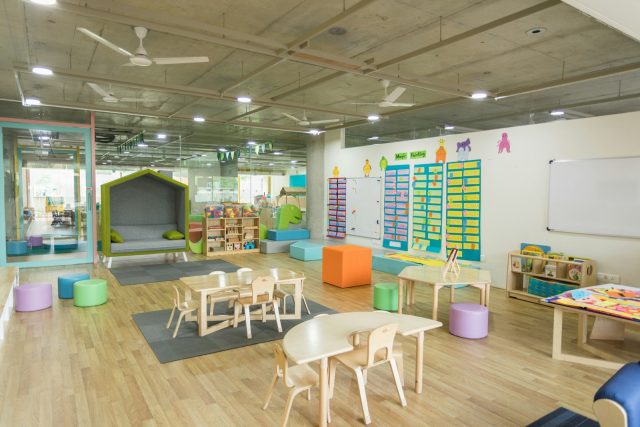
A preschool classroom is one of the most important environments in a child’s early years. The furniture chosen for this space has a direct effect on how children interact, learn, and grow. Teachers and administrators must consider comfort, safety, and functionality when making these decisions. The right setup can help children feel secure while supporting their curiosity and creativity. Schools that invest in quality pieces can create classrooms that inspire both learning and play. That is why many educators look to early learning aids from Worthington Direct when creating a safe and engaging preschool environment. Selecting the right preschool furniture involves more than just appearance. It’s about building a space that helps young children thrive and makes daily tasks easier for teachers.
The Importance of Size and Scale
Preschool furniture should be designed with the size of young children in mind. Chairs and tables that are too tall or too low can cause discomfort and discourage proper posture. The correct scale ensures children can sit comfortably and reach their work without strain. When children can easily access materials and participate in activities, they gain confidence and independence. Teachers also benefit, as properly scaled furniture allows for smoother classroom management and less need for constant adjustments.
Safety and Durability
Safety is one of the most critical considerations for preschool furniture. Rounded edges, sturdy construction, and stable bases are essential features. Young children are active and curious, which means furniture must withstand daily use while keeping students safe. Durable materials not only prevent accidents but also extend the life of classroom pieces. Schools that invest in high quality items save money over time because replacements are needed less often. A safe and reliable environment encourages both learning and play.
Flexibility and Function
Preschool classrooms are often used for a wide range of activities throughout the day. Furniture that can adapt to different tasks supports a more engaging learning experience. Lightweight tables and chairs allow teachers to rearrange the room quickly. Storage units that are easy for children to access help promote responsibility and independence. Flexibility in furniture design also allows classrooms to grow and change as programs evolve. This versatility makes the space more effective for both students and teachers.
Comfort and Engagement
Comfortable furniture plays an important role in how long children can focus on activities. Padded chairs, soft rugs, and cozy reading nooks can help children feel relaxed and ready to learn. When the classroom feels inviting, children are more likely to stay engaged. Thoughtful furniture choices also encourage collaboration, as children can gather around tables or sit in small groups for projects. This type of environment supports both social and academic development. Comfort helps children feel safe and included, which supports their learning in the early years.
Supporting Creativity and Exploration
Furniture is not only functional but also a tool for creativity. Bright colors, unique designs, and interactive elements can spark imagination. Storage areas filled with art supplies, blocks, or sensory materials encourage exploration. When classrooms are designed to inspire curiosity, children feel motivated to try new activities. Teachers also benefit from an environment that supports hands-on learning. A well-designed classroom balances structure with freedom, giving children room to grow.
Choosing furniture for preschool classrooms requires thoughtful consideration of both safety and learning needs. Size, comfort, durability, and flexibility all play a role in shaping a productive environment. Schools that select high quality pieces are making an investment in both their students and their programs. A well furnished classroom helps children feel secure and inspired while supporting teachers in their work. By focusing on furniture that promotes growth, creativity, and safety, schools create spaces that truly prepare children for the future.










